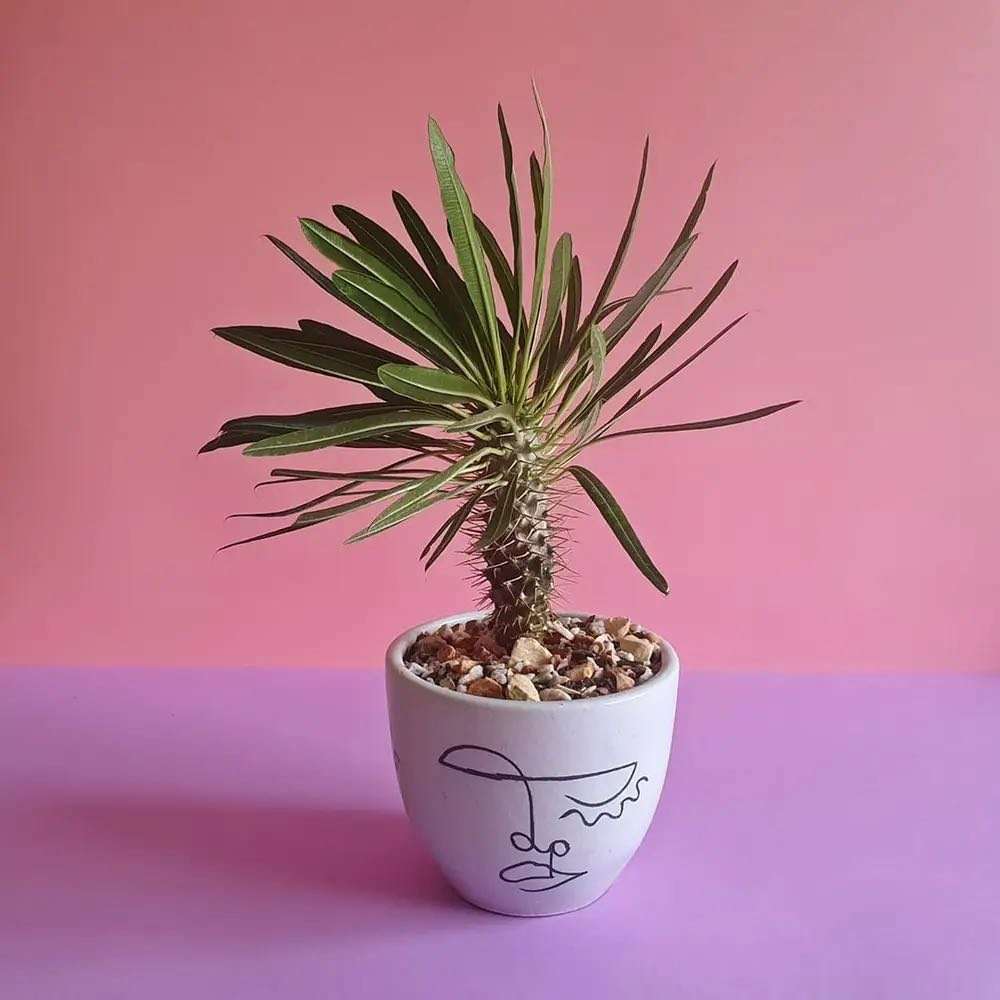
The Pachypodium family includes the Madagascar-endemic Pachypodium lamerei. This succulent has thick, bulging stems that support it and preserve water. The stems also develop upward, like the leaves. The deadly latex sap is present in every part of the succulent Madagascar Palm. Yet pets won’t want to get close to the plant because of the hard hooked spines that encircle it.
The stems of Pachypodium lamerei can reach heights of 4 feet and a width of 24 inches when grown in its natural environment. It is advised against growing this succulent inside if you want it to produce blossoms. The white, star-shaped flowers have a pleasant scent and only have a brief lifespan of a few weeks.
Care Guide

Light
Since this is a sun-loving houseplant, choose the location that receives the most sunlight. Bright situations won’t stop them from performing admirably, but “mid” light or below should be avoided.
Almost all of the new growth that these plants produce occurs in the summer. Theoretically, you could bring your plant within during the late fall, winter, and early spring before relocating it outside to a sunny position.
Watering
The idea that succulents don’t require a lot of water is a popular misconception. Even the most hardy succulents won’t thrive if you treat them this way, though they will live longer than some other houseplants with higher watering requirements.
Water your Pachypodium frequently in the summer whenever the soil starts to dry out if you want it to thrive. You should prune in the winter to stop the roots from decaying in the cooler weather; water sparingly instead. At most, once or twice every month.
Feeding
Only a few times a year at most will you need to fertilize the Pachypodium because it is not a heavy feeder. Always wait till the plant is actively growing before doing it. Use liquid fertilizer or scatter a few slow-release feed granules across the soil’s surface.
Temperature
Because of its adaptation to living in warm areas, this plant requires warm temperatures. in the winter, no lower than 10 °C (50 °F).
Repotting
They take a long time to outgrow their pots, but if your Pachypodium starts to wobble or tumble from becoming top-heavy, you may decide to repot it.
They can also look quite nice in unusual, eccentric containers. Just be careful because root rot and overwatering are more likely if the planter you choose lacks drainage holes.
Standard soil mixtures are acceptable, but if you want to be extra cautious, use a compost mix specifically formulated for succulents and cacti or add some grit to the soil to increase drainage. At any time of the year, you can repot your plant, but you should exercise caution because the spines can be unpleasant if you handle the stem improperly.
Repotting these plants might not be possible because of how huge they can grow (see the photographs in the comments section below). In that case, top treat the area by removing the top inch of dirt and adding new.
Propagation
The offsets that eventually form around the base may be removed and subsequently potted up by daring readers. But, it’s challenging for the typical home plant owner to accomplish this.
Fertilizer
When the Pachypodium lamerei is vigorously growing, you can apply fertilizers once every two months, however it is not necessary. Use the fertilizer only once every three months during the winter, when the succulent is dormant.
Table





